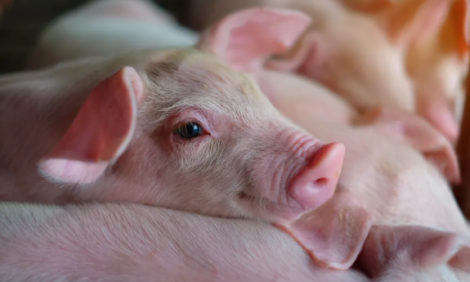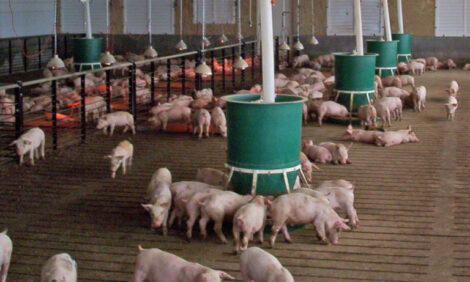



AFO's, CAFO's, NPDES and TMDL's - What you need to know!
USDA ERS - Take an AFO, concentrate it to make a CAFO, mix in some NPDES and TMDL, and you have a brew that more livestock and poultry producers may have to imbibe in the near future ad US livestock operations face greater restriction. |
 |
According to the U.S. Environmental Protection Agency, an AFO is an Animal Feeding Operation that meets the following criteria:
- Animals have been, are, or will be stabled or confined and fed or maintained for a total of 45 days or more in any 12-month period.
- Crops, vegetation, forage growth, or postharvest residues are not sustained in the normal growing season over any portion of the lot or facility.
- confines more than 1,000 animal units (AUs), where 1,000 AUs are defined as 1,000 slaughter and feeder cattle, 700 mature dairy cows, 2,500 swine each weighing more than 25 kilograms, 30,000 laying hens or broilers (if a facility uses a liquid manure system), or 100,000 laying hens or broilers (if a facility uses continuous overflow watering);
- confines between 300 and 1,000 AUs and discharges pollutants into waters through a manmade ditch, flushing system, or similar manmade device, or directly into waters that pass through the facility.
To mitigate actual and potential water quality impacts posed by large animal feeding operations, EPA has proposed revised regulations for CAFOs. Among the major proposed changes for the NPDES permit and Effluent Limit Guidelines are:
- change in size thresholds for determining which animal feeding operations are considered CAFOs and therefore require a permit (one option would include all AFOs over 300 AUs);
- elimination of the 25-year/24-hour storm exemption;
- making a nutrient management plan part of the NPDES permit, which would cover land application of animal waste;
- adopting a zero discharge requirement with no overflow allowance for swine, veal, and poultry CAFOs; and
- requiring installation of depth markers for open liquid impoundments.
EPA estimates that up to 44,000 operations might be covered by the proposed regulations, depending on the size thresholds that are finally put in place. Currently, about 12,000 operations are of sufficient size to be considered CAFOs, but only about 3,900 (33 percent) actually have permits.
EPA is also proposing increased use of the Total Maximum Daily Load (TMDL) provisions of the Clean Water Act (33 U.S.C. § 1313(d)).
A TMDL is a calculation of the maximum amount of a pollutant that a water body can receive and still meet water quality standards, and an allocation of that amount to the pollutant’s sources.
The TMDL provisions are intended to be the second line of defense for protecting the quality of surface water resources. When technology-based controls on point sources are inadequate for water to meet State water quality standards, Section 303(d) of the Clean Water Act requires states to identify those waters and to develop TMDLs.
The TMDL for the watershed is the sum of individual wasteload allocations for point sources, load allocations for nonpoint sources and natural background, and a margin of safety. Wasteload allocations for point sources are enforced through NPDES discharge permits. Load allocations for nonpoint sources are not currently regulatory, but can be met through voluntary approaches.
Proposed revisions to TMDL regulations would require TMDLs for impaired waters even where the sole source of impairment is nonpoint source pollution, and “reasonable assurance” that the load allocation (for nonpoint sources such as agriculture) will in fact be implemented.
Demonstration of reasonable assurance must show that management measures or other control actions address the particular pollutant, and that they are implemented. While not creating new authorities, the proposed changes would focus attention on the role pollution from AFOs (and the rest of agriculture) plays in contributing to water quality impairment, and could be an incentive for states to elevate pressure on AFOs to adopt alternative management practices.
There are more than 20,000 waters identified nationally as being impaired and possibly requiring a TMDL. The top impairments in 1998 were sediment, nutrients, and pathogens. AFOs can be a source of all three pollutants.
Source: USDA, ERS - April 2002








